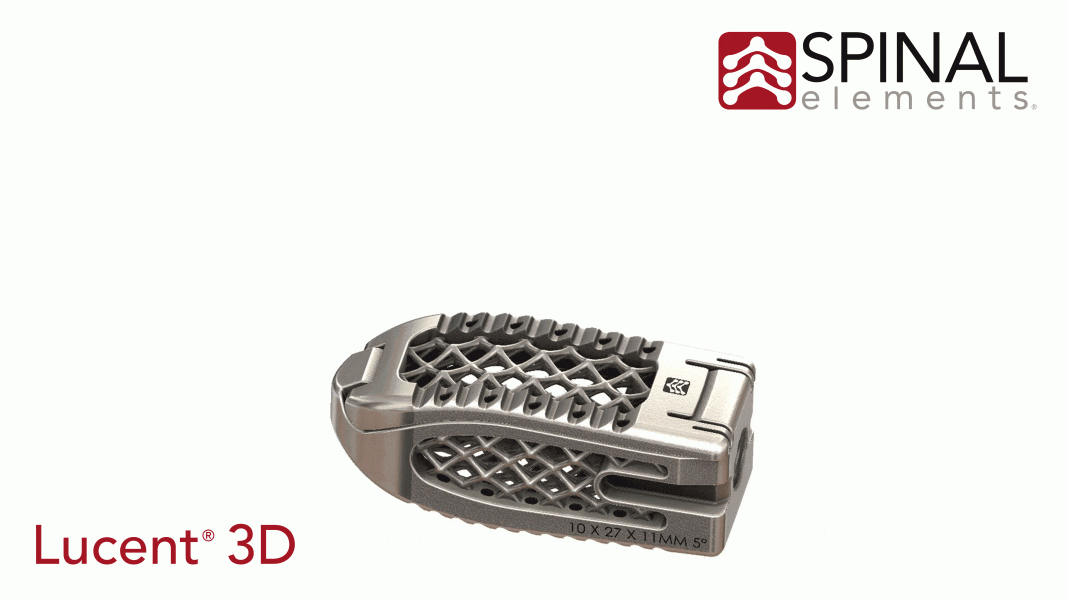Spinal Elements, a spine technology company, today announced the first 510(k) clearance in the Lucent® 3D line of 3D-printed interbody devices.
Spinal Elements, in developing lucent 3D, has taken advantage of the unique capabilities of 3D printing by printing a functionally unique multi-component device in a single printing step. The resulting Lucent 3D implant is comprised of a strut-and-lattice structure with a bone graft chamber access lid designed to allow the surgeon to deliver a large amount of tightly packed graft inside the interbody structure, maximizing the amount of graft material available for fusion. Furthermore, when the access lid to the graft chamber is closed, the lid is designed to help distribute the loads of the spine in order to reduce the incidence of subsidence by having more surface area available for load distribution.
With the FDA clearance and upcoming release of the novel Lucent 3D system, Spinal Elements continues its long tradition of excellence and leadership in introducing novel design and materials science to interbody devices. Spinal Elements was among the first companies to obtain interbody clearance for PEEK devices in 2005 and followed that in 2012 by being the first to apply Ti-Bond®, Spinal Elements’ brand of plasma-sprayed titanium, on the surface of its PEEK interbody devices.
“The FDA clearance of Lucent 3D allows Spinal Elements to differentiate itself in a crowded 3D-printed interbody market. Lucent 3D’s novel design is meant to address the challenges surgeons have shared with us of other 3D-printed interbody devices – subsidence and the amount of bone graft material available for fusion,” stated President and CEO Jason Blain. “We are thrilled to obtain this first clearance and look forward to building on this platform to complement our various procedural solutions.”
Spinal Elements is a technology-driven company headquartered in Carlsbad, California. A leading designer, developer, manufacturer and marketer of innovative medical devices used in spinal surgical procedures, Spinal Elements combines leading medical device technologies, biologics and instrumentation to create positive surgical outcomes that exceed surgeon and patient expectations. Spinal Elements has built a reputation delivering innovative and differentiated technologies that enable fundamental shifts in solutions for spine surgery. The company markets a complete portfolio of advanced spinal implant technologies.
